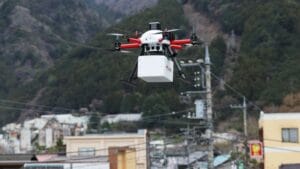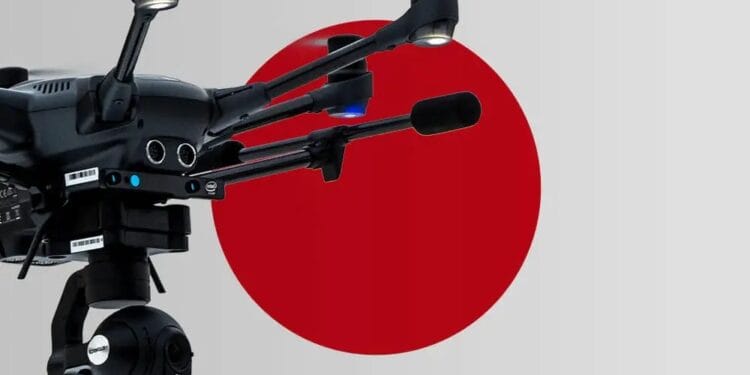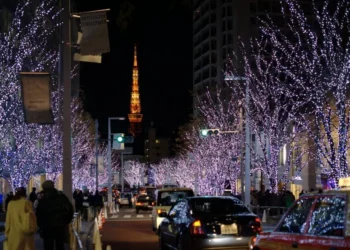No products in the cart.
Japan’s Drone Regulations: Why and How Permits Are Issued
Introduction
Drones have become popular worldwide, serving purposes in fields ranging from photography to logistics. In Japan, however, stricter regulations limit the use of drones, especially in urban areas. While Japan’s cautious approach toward drones might seem restrictive, it’s rooted in safety concerns and privacy protection. Understanding why drones are restricted and how to obtain a permit in Japan can provide insight into the country’s regulatory landscape and its stance on public safety and technological advancements.
Why Japan Regulates Drones So Strictly
Several key concerns have driven Japan’s strict stance on drone usage: privacy, safety, and security. Japan’s densely populated cities and narrow streets raise potential safety risks that could lead to accidents if drones are operated recklessly. Concerns over possible terrorist threats also play a role, especially after a 2015 incident where a drone carrying a small amount of radioactive sand landed on the Japanese Prime Minister’s office roof. Although there were no injuries, the incident raised concerns about the potential for drones to be used in attacks.
Privacy concerns are also a major reason for Japan’s restrictions. Many people are uneasy about drones flying in residential areas, where cameras can capture private moments in homes and backyards. Due to Japan’s strong respect for privacy and personal space, any technology that might intrude into private life is closely monitored.
The Legal Framework: Defining Where and How Drones Can Be Flown
Japan’s approach to drone regulation is shaped by the Aviation Law and Radio Law. These laws establish clear boundaries on where and how drones can be used. The Aviation Law, updated in 2015, prohibits drone flights in populated areas, near airports, above 150 meters, and over certain landmarks. This effectively makes it difficult to operate drones in most major urban areas. Additionally, Japan’s Radio Law requires that drones meet certain frequency standards to avoid interference with other communication devices.
Drone operators who want to fly their drones outside these restrictions must apply for a permit through the Ministry of Land, Infrastructure, Transport, and Tourism (MLIT). For commercial or research purposes, such as construction site monitoring or aerial surveys, MLIT may grant exemptions. However, obtaining these permits can be a rigorous process requiring thorough documentation.
Types of Permits and Permissions Needed
There are different types of permits depending on the purpose and location of drone use. Operators usually need permissions in three main areas: flight in prohibited airspace, operation beyond visual line of sight, and nighttime operations.
1. Flight in Prohibited Airspace:
Areas over populated regions, near airports, or above certain public events are restricted. To fly drones in these locations, operators need permission from MLIT. Applicants must submit detailed flight plans, show proof of insurance, and, in some cases, have licensed pilots.
2. Beyond Visual Line of Sight (BVLOS) Operations:
BVLOS flights allow drones to operate out of sight from the operator. For these operations, special safety precautions must be taken, and operators must demonstrate they have the technical skills required to control drones in these conditions.
3. Nighttime Operations:
Drones generally cannot be flown at night due to visibility and safety concerns. To obtain a nighttime permit, operators must have proper lighting equipment installed on the drone and be able to clearly see the drone in the dark.
Each of these permit types requires separate applications and often specialized training. Additionally, depending on the drone’s size and weight, the operator may need further authorization under the Aviation Law.

Steps to Obtain a Permit
To legally operate a drone in restricted areas, operators must follow a detailed application process with MLIT. Here are the main steps involved:
1. Submit a Detailed Flight Plan:
The operator must submit a document outlining the purpose of the flight, location, time, and altitude. This plan should also specify measures that will be taken to ensure the safety of both the operator and the public.
2. Acquire Liability Insurance:
Drone operators in Japan are usually required to have liability insurance. This insurance is intended to cover any damages that could result from accidents, especially in populated areas.
3. Complete Training and Certification:
For those applying for permits involving BVLOS or nighttime operations, MLIT may require proof of training. Certain organizations in Japan provide certification courses that cover essential drone safety, operation, and legal compliance topics.
4. Install Necessary Safety Equipment:
Drones operating in restricted zones or under special conditions must be equipped with safety features such as GPS tracking, collision avoidance systems, and emergency parachutes. The specifications for this equipment vary depending on the type of permit being applied for.
5. Apply Well in Advance:
Given the high volume of permit applications, MLIT advises operators to apply several weeks to months in advance, especially for complex requests such as BVLOS operations.
Penalties for Unauthorized Drone Use
Japan imposes strict penalties for those who disregard drone regulations. Flying drones in restricted areas or without the necessary permits can lead to fines and confiscation of the equipment. For example, unauthorized flights near airports or government buildings can result in fines of up to 500,000 yen. Repeat offenders may also face more severe penalties or criminal charges.
These penalties serve as a deterrent against illegal drone flights and reflect Japan’s commitment to maintaining public safety and order. The government also relies on public reporting, encouraging citizens to report suspicious or illegal drone activity.
Drone Opportunities Despite Restrictions
Despite these limitations, Japan’s drone industry is growing. Companies in fields such as construction, agriculture, and logistics are finding creative ways to work within these regulations to harness the potential of drones. For example, drone delivery services have been tested in remote areas, and agricultural drones are helping farmers manage crops more effectively.
As Japan continues to explore the benefits of drone technology, some experts believe the government may adjust regulations to allow for more commercial drone applications. However, these changes are likely to prioritize safety and privacy as drones become a more common part of Japanese life.
Looking Forward: The Future of Drones in Japan
Japan’s stringent drone regulations reflect the country’s cautious approach to technology, especially regarding public safety and privacy. However, the high level of regulation does not mean that drones are unwelcome in Japan. Instead, the restrictions ensure that drones are used responsibly and in ways that minimize risks to the public. As the industry develops, these regulations may evolve, opening the door to more applications in urban areas.
For now, aspiring drone operators in Japan should be prepared to follow the established rules and go through the proper channels to secure permits. Although the process can be lengthy, those who comply with Japan’s regulations can still find ways to integrate drones into their work or hobbies in safe and meaningful ways.










